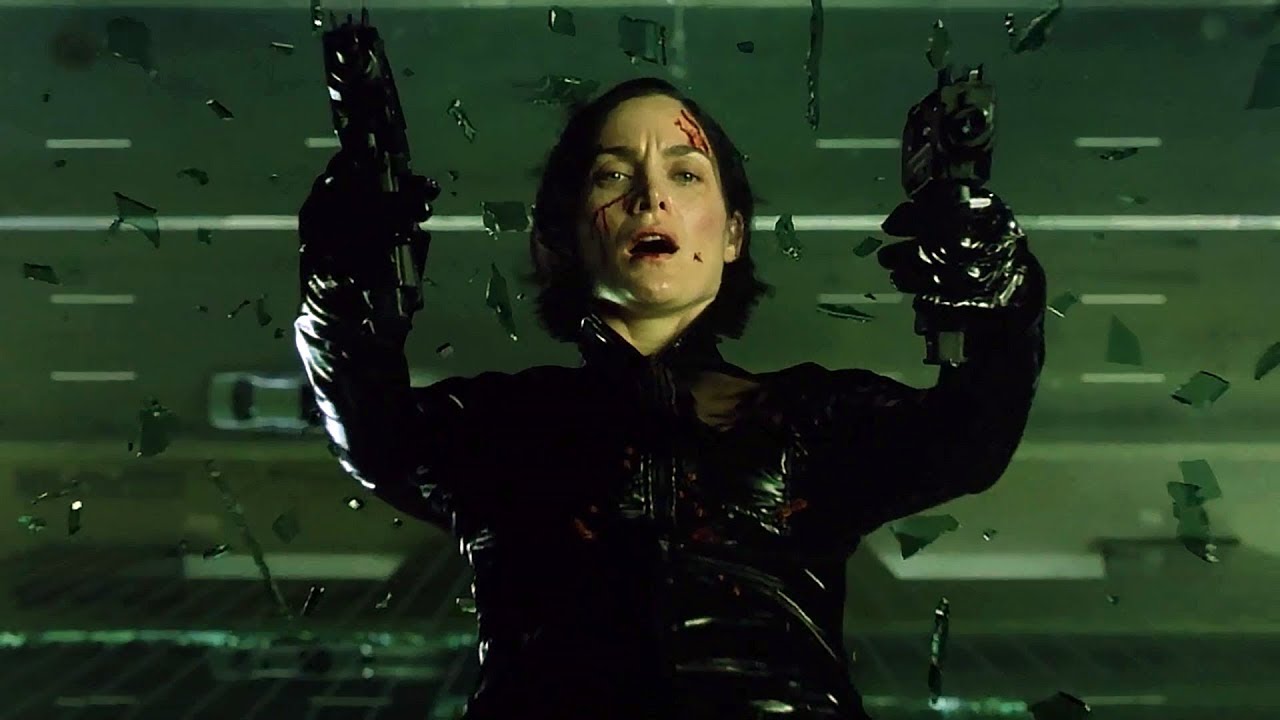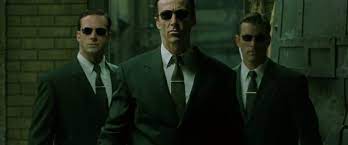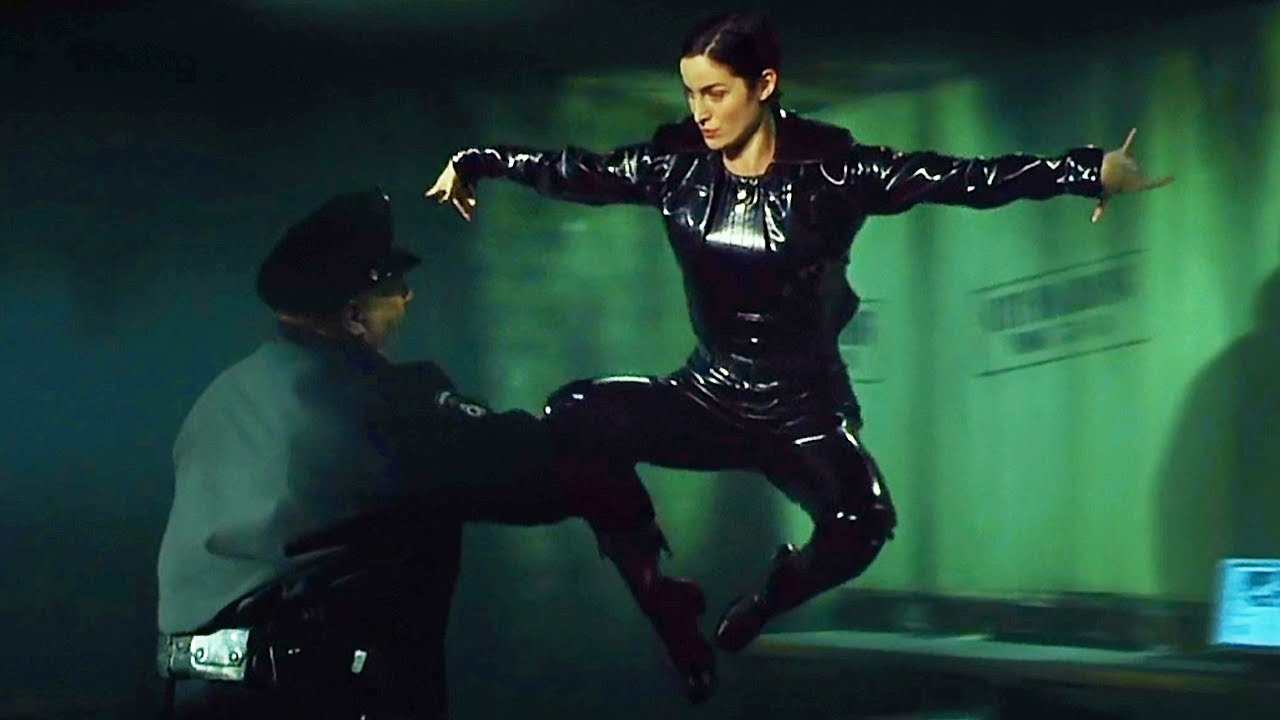🎬 The Matrix Reloaded (2003)

“The Matrix Reloaded” (2003): A Complex, Ambitious Follow-Up to a Sci-Fi Masterpiece
When The Matrix premiered in 1999, it redefined the sci-fi genre, blending philosophical inquiry with revolutionary visual effects and groundbreaking action sequences. Its sequel, The Matrix Reloaded (2003), directed by the Wachowskis, faced the monumental challenge of expanding the rich mythology of the original while delivering the same thrilling spectacle. The result is a bold, ambitious film that explores complex themes and delivers jaw-dropping action, even as it struggles to fully balance its intellectual aspirations with its narrative coherence.
Plot Overview
The Matrix Reloaded picks up six months after the events of The Matrix. Neo (Keanu Reeves), now fully embracing his role as “The One,” continues his fight against the Machines alongside Trinity (Carrie-Anne Moss) and Morpheus (Laurence Fishburne). Meanwhile, the human city of Zion is under imminent threat, with 250,000 Sentinels tunneling toward it in an effort to wipe out humanity’s last bastion.
The film revolves around Neo’s quest to fulfill his destiny. Guided by the Oracle (Gloria Foster), he learns that he must locate the mysterious Keymaker (Randall Duk Kim) to gain access to the Source, the heart of the Matrix. Along the way, Neo confronts new challenges, including rogue programs like the charismatic Merovingian (Lambert Wilson), the relentless Agent Smith (Hugo Weaving), and a web of philosophical dilemmas that question free will, determinism, and the nature of reality.
Themes and Philosophical Depth
One of the defining features of The Matrix Reloaded is its commitment to expanding the philosophical underpinnings of the original. The film delves deeper into questions of choice, control, and causality. The Oracle’s guidance and Neo’s encounters with characters like the Merovingian and the Architect (Helmut Bakaitis) challenge the notion of free will, suggesting that even “The One” may be a pawn in a grander system of control.
The Architect’s climactic monologue, which reveals the cyclical nature of the Matrix and Neo’s role as part of a system of systemic control, is a moment of profound revelation. It reframes the narrative, positioning the Matrix not as a binary struggle between humans and machines but as a complex ecosystem where freedom and determinism coexist uneasily.
While these philosophical explorations are compelling, they also risk alienating viewers. The film’s dialogue-heavy sequences, particularly the Architect’s exposition, can feel dense and overly abstract, leaving some audiences struggling to connect emotionally with the story.
Action Sequences: A Visual Feast
The Matrix Reloaded raises the bar for action cinema with sequences that remain iconic to this day. The Wachowskis blend martial arts, cutting-edge CGI, and inventive choreography to create set pieces that are both thrilling and visually stunning.
- The Burly Brawl: Neo’s showdown with hundreds of Agent Smith clones is a standout moment. Combining wire-fu choreography with CGI-enhanced visuals, the sequence showcases Neo’s superhuman abilities while emphasizing the relentless nature of his enemies. Though some of the CGI has aged, the scene’s sheer audacity and energy make it unforgettable.
- The Freeway Chase: Arguably the film’s centerpiece, the freeway chase is a masterclass in action filmmaking. With Morpheus, Trinity, and the Keymaker fighting to evade Agents and the deadly Twins (Neil and Adrian Rayment), the sequence combines practical stunts, high-speed chases, and hand-to-hand combat in a relentless, pulse-pounding spectacle.
- Neo vs. The Merovingian’s Henchmen: Set in a luxurious chateau, this fight sequence is a dazzling blend of weapon-based combat and martial arts. Neo’s use of various weapons, from swords to maces, adds variety to the action while reinforcing his status as a near-unstoppable force.
Character Development
Neo (Keanu Reeves):
Neo’s journey in Reloaded focuses on his struggle to reconcile his identity as “The One” with his humanity. Keanu Reeves delivers a subdued yet commanding performance, embodying Neo’s internal conflict as he grapples with his responsibilities and his love for Trinity. While Neo’s growth is more intellectual than emotional in this installment, his evolution sets the stage for the trilogy’s conclusion.
Trinity (Carrie-Anne Moss):
Trinity remains a formidable force in Reloaded, with Carrie-Anne Moss delivering a performance that balances strength and vulnerability. Her love for Neo is a driving force in the narrative, culminating in a powerful sequence where Neo defies the Architect’s predictions to save her life.
Morpheus (Laurence Fishburne):
Morpheus’s faith in Neo and the prophecy takes center stage in Reloaded. Fishburne portrays Morpheus as a charismatic and unwavering leader, though his conviction is challenged as the film introduces ambiguity about the prophecy’s true meaning. His impassioned speech to the citizens of Zion showcases his leadership, while his combat prowess shines during the freeway chase.
Agent Smith (Hugo Weaving):
Hugo Weaving’s Agent Smith evolves into a more menacing and multifaceted antagonist in Reloaded. Now a rogue program capable of copying himself, Smith’s transformation into a virus mirrors the themes of systemic corruption and entropy within the Matrix. Weaving’s performance is equal parts menacing and sardonic, making Smith one of the most compelling characters in the film.
New Additions to the Cast
- The Merovingian (Lambert Wilson): The Merovingian is a captivating new character who embodies excess, arrogance, and the power of choice. Wilson’s performance is deliciously over-the-top, delivering lines with a mix of charm and menace. The Merovingian’s philosophical musings on causality add a layer of intrigue to his role.
- The Twins (Neil and Adrian Rayment): The ghostly, dreadlocked Twins are memorable henchmen who add an element of supernatural menace to the action. Their ability to phase through solid objects makes them formidable adversaries, particularly during the freeway chase.
- The Architect (Helmut Bakaitis): The Architect’s role as the creator of the Matrix is pivotal to the film’s philosophical underpinnings. Bakaitis imbues the character with an air of cold detachment, delivering one of the most cryptic and debated monologues in sci-fi cinema.
World-Building: Expanding the Matrix Universe
Reloaded significantly broadens the scope of the Matrix universe. The introduction of Zion provides a glimpse into the last human city, showcasing a vibrant and diverse community fighting for survival. The film also explores the inner workings of the Matrix, introducing rogue programs, backdoors, and the concept of anomalies.
These additions enrich the mythology of the series, though they also make the narrative more complex. Some viewers may find the expanded lore overwhelming, particularly as the film juggles multiple subplots and philosophical ideas.
Visual and Sound Design
Visually, The Matrix Reloaded is a triumph. Cinematographer Bill Pope creates a striking contrast between the cold, green-tinged world of the Matrix and the earthy, warm tones of Zion. The film’s use of CGI, though occasionally dated, remains impressive in its ambition and scope.
Don Davis’s score combines orchestral arrangements with electronic elements, perfectly capturing the film’s blend of philosophical introspection and kinetic energy. The soundtrack, featuring artists like Rage Against the Machine and Rob Dougan, enhances the film’s cyberpunk aesthetic.
Strengths and Weaknesses
Strengths:
- Ambition: Reloaded is unafraid to tackle big ideas, pushing the boundaries of sci-fi storytelling.
- Action Sequences: The film delivers some of the most inventive and exhilarating action scenes in the genre.
- World-Building: The expanded mythology adds depth and intrigue to the Matrix universe.
- Performances: The cast, particularly Hugo Weaving and Laurence Fishburne, deliver compelling performances.
Weaknesses:
- Dense Philosophy: The film’s intellectual aspirations can feel heavy-handed, alienating some viewers.
- Pacing Issues: The narrative occasionally drags, particularly during exposition-heavy scenes.
- Lack of Emotional Connection: The emphasis on philosophy and world-building sometimes comes at the expense of character development.

Conclusion
The Matrix Reloaded (2003) is a daring and ambitious sequel that expands the scope and complexity of the original while delivering jaw-dropping action. While its dense philosophy and narrative complexity may not appeal to all audiences, the film’s commitment to pushing boundaries and exploring profound ideas makes it a worthy continuation of the Matrix saga.
For fans of the original, Reloaded offers a deeper dive into the Matrix universe, blending spectacle with substance in a way few films dare to attempt. Though imperfect, it remains a landmark in sci-fi cinema and a testament to the Wachowskis’ visionary storytelling.
Rating: 8.5/10